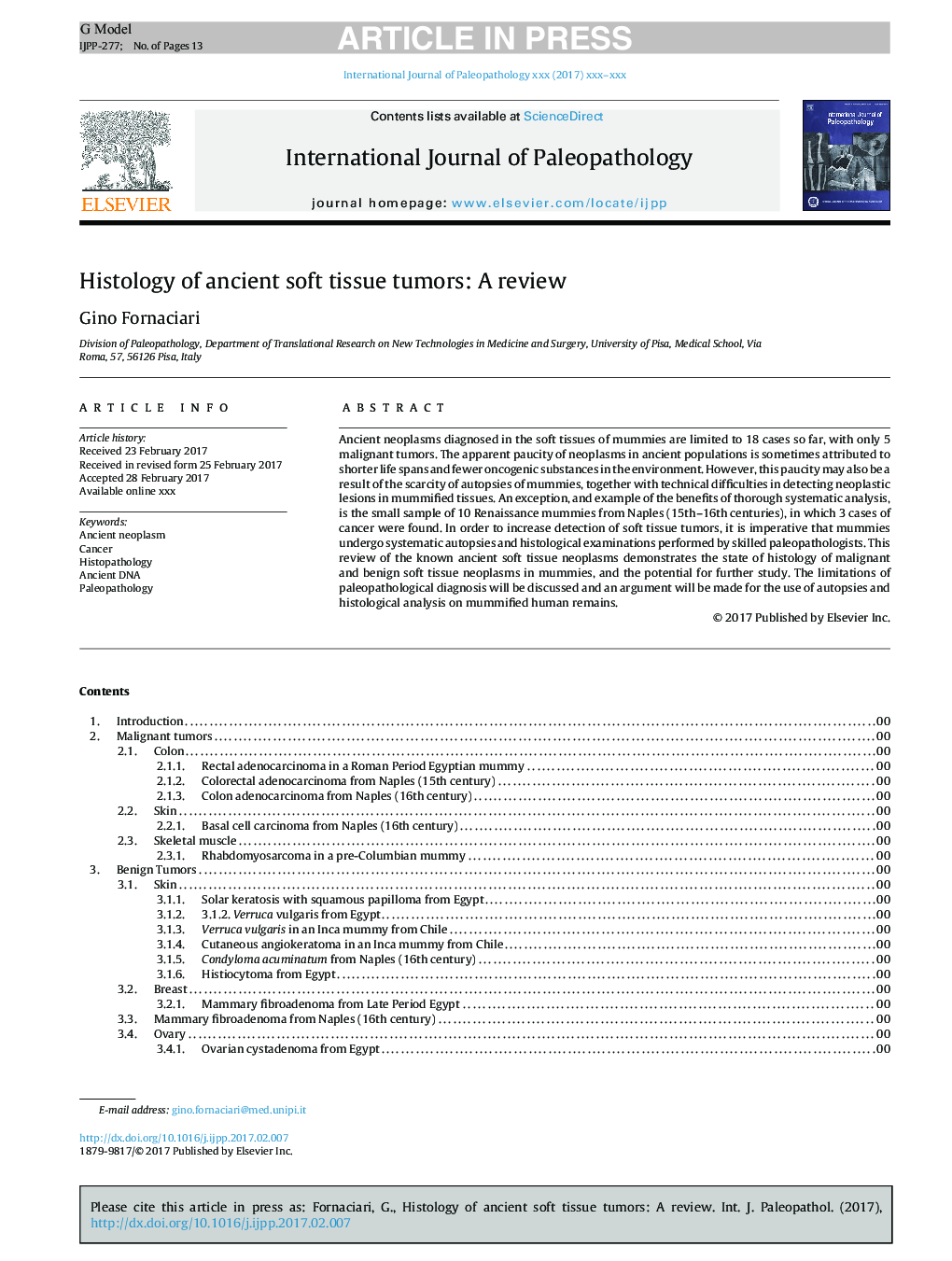| Article ID | Journal | Published Year | Pages | File Type |
|---|---|---|---|---|
| 6554762 | International Journal of Paleopathology | 2018 | 13 Pages |
Abstract
Ancient neoplasms diagnosed in the soft tissues of mummies are limited to 18 cases so far, with only 5 malignant tumors. The apparent paucity of neoplasms in ancient populations is sometimes attributed to shorter life spans and fewer oncogenic substances in the environment. However, this paucity may also be a result of the scarcity of autopsies of mummies, together with technical difficulties in detecting neoplastic lesions in mummified tissues. An exception, and example of the benefits of thorough systematic analysis, is the small sample of 10 Renaissance mummies from Naples (15th-16th centuries), in which 3 cases of cancer were found. In order to increase detection of soft tissue tumors, it is imperative that mummies undergo systematic autopsies and histological examinations performed by skilled paleopathologists. This review of the known ancient soft tissue neoplasms demonstrates the state of histology of malignant and benign soft tissue neoplasms in mummies, and the potential for further study. The limitations of paleopathological diagnosis will be discussed and an argument will be made for the use of autopsies and histological analysis on mummified human remains.
Related Topics
Life Sciences
Biochemistry, Genetics and Molecular Biology
Physiology
Authors
Gino Fornaciari,
